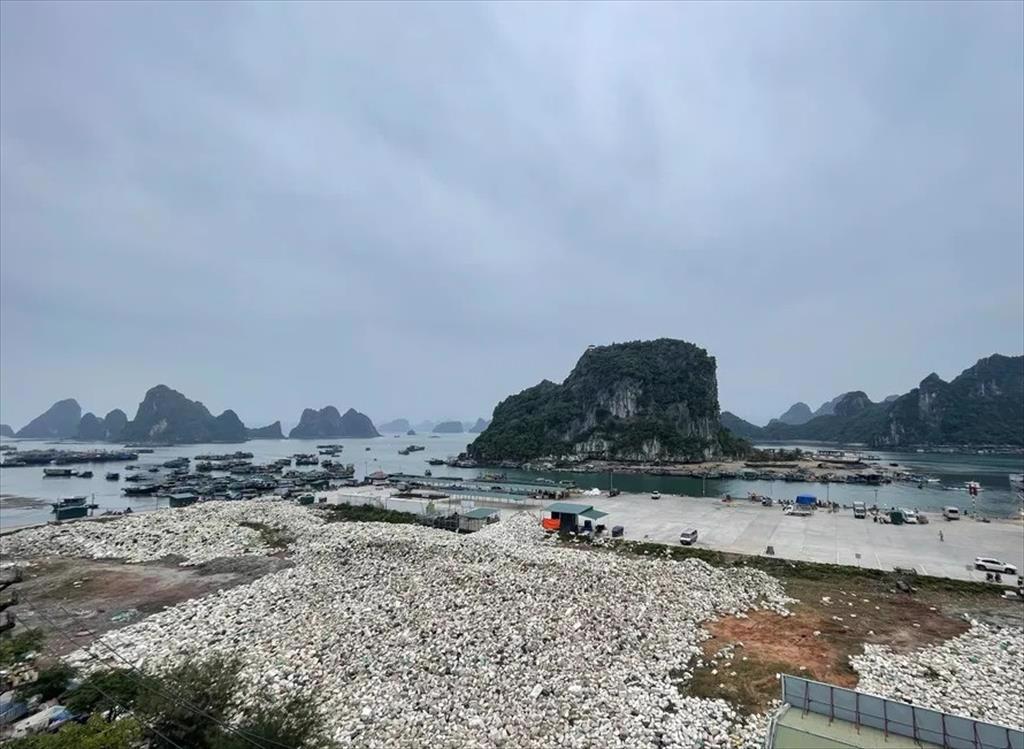HDPE plastic is environmentally friendly, durable, flexible, non-oxidizing, resistant to organisms, resistant to big waves, strong winds and can withstand loads.

More than 6.85 million aquaculture floating cages made from foam in the northern province of Quang Ninh have been replaced by those made from high-density polyethylene plastic, benefiting both the environment and farmers.
As of November last year the province had more than 32,000ha of aquaculture farms, and they had replaced 98 per cent of foam cages with plastic.
HDPE plastic is environmentally friendly, durable, flexible, non-oxidising, resistant to big waves and strong winds and can withstand high loads.
Local authorities have destroyed the foam cages without causing pollution.
In Cam Pha City and Ha Long City, foam pieces have been sent to industrial zones and cement plants to be used as fuel to recover heat and save coal.
When burned at high temperatures, foam is converted completely to heat, and does not affect the environment.
It is then burned into clinker for cement production.
In Quang Yen Town, the foam cages that need to be destroyed have been transported by a HDPE cage supplier in Bac Ninh Province for recycling.
In Van Don District, over two million cages have been collected at Cai Rong Fishing Port, and will be processed by the VietCycle Joint Stock Company, which recycles domestic scrap for free.
The company uses a crushing, heating and pressurized gas compression line to create solid plastic, which is then converted into other products.
Pham Van Tung, a technical expert at the VietCycle Joint Stock Company, said on knowing that Van Don District wants to recycle more than two million pieces of foam, the company took the production line there since transporting millions of bulky foam floats would take a lot of effort and money.
In the one-odd month since it began, the company has recycled around 40 tonnes of foam and another 250 tonnes are awaiting processing, he said.
It is installing a new line with a higher capacity to increase efficiency, and expects to do so in the second quarter of 2024, he told Vietnam News Agency.
He said the line does not affect the environment or even cause noise pollution, and is easy to transport.
After being cleaned, the foam pieces are crushed, heated and compressed to form solid plastic pieces of more manageable size than the floats.
The pieces are transported to factories in Hai Phong and Ha Noi to clean them further before being used as inputs for waste plastic products, or so-called black plastic, he said.
He said Styrofoam is also a form of plastic, and so when processed by burning it normally gives off black smoke, polluting the environment.
Gathering more than two million foam cages at the Cai Rong fishing port not only occupies a lot of space but also affects the environment and poses fire and explosion hazards.
Dang Ngoc Thiet, head of the port and harbor section at the Van Don District Agricultural Technical Service Centre, said that a large fire broke out in the port’s temporary foam cage storage yard in May last year.
The centre has had to establish a 24-hour monitoring team with surveillance cameras to deal with fire risks.
Bui Van Huong, chairman of the Cai Rong Town People's Committee, hoped the company would speed up recycling of the foam stored at the port.
Local authorities hope the company will invest in more production lines with larger capacities to soon recycle the remaining foam floats.
Source: VNS